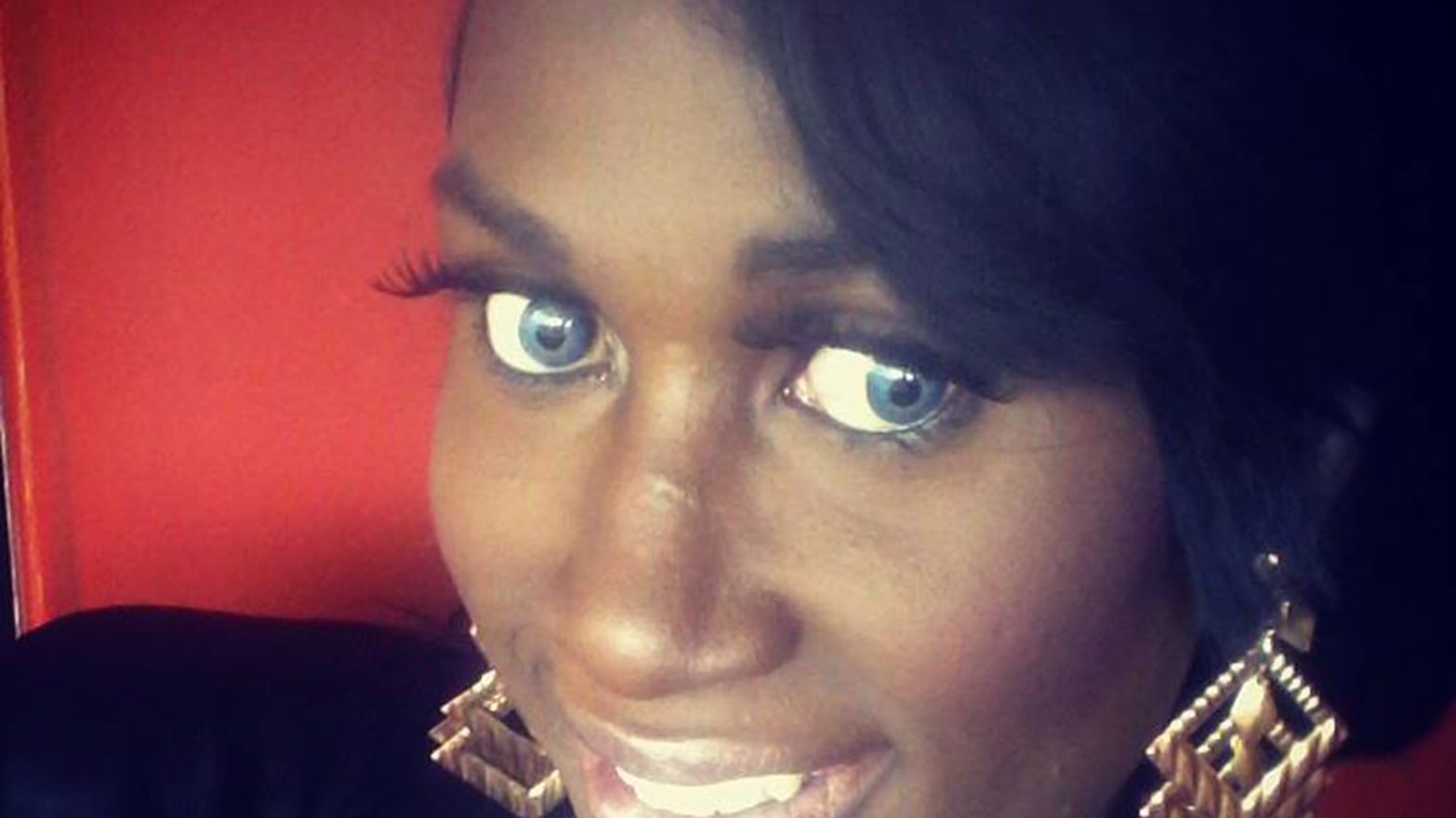For the 10 transgender women who have been murdered in the U.S. this year, not even death can bring an end to disrespect.
On Tuesday morning, India Clarke, a 25-year-old black transgender woman and cosmetology student, was found lying on the ground near basketball courts at a community center in Tampa, Florida. Homicide detectives confirmed that she had been beaten to death.
But when local TV station Bay News 9 reported on the murder, they didn’t call her India.
They introduced her as “Samuel Elija Clarke, also known as India,” and only then used her chosen name. And instead of referring to India using female pronouns, they published a clunky piece of copy that fastidiously and obviously avoids the use of pronouns altogether: “violence to the upper body” and not “violence to her upper body,” for example.
It’s a pattern that has been tragically repeated too many times in 2015: A transgender woman, most often a transgender woman of color, is found murdered but the media still fails to respect her identity.
Outlets that misreport the deaths of transgender women aren’t just violating established journalistic standards, they’re adding insult to the ultimate injury. Worse, they risk contributing to the same mindsets that are used to justify violence against transgender women of color: the dual and intertwined beliefs that transgender women aren’t really women and that people of color are somehow less than human.
As transgender activist and writer Monica Roberts writes in her report on Clarke: “Do you media peeps do that crap to white women and white people in general who are murdered? I doubt it. So why do you media peeps continue to racistly disrespect the lives of Black trans people by doing that BS?”
As Roberts observes, another local TV station put India Clarke’s chosen name in quotation marks and used male pronouns for her, despite also reporting that she has been living “almost exclusively as a woman” for two years. The station also wrote that Clarke was arrested in 2013 for “prostitution while posing as a woman,” a phrasing that positions her identity as an act of deception—a trope that Roberts criticizes in her bitingly satirical post “How (Not) To Write About Black Trans Women.”
The station’s video reporting was even more demeaning with the headline “Man Dressed as Woman Found Murdered” printed in tall block letters at the bottom of the screen.
This is appalling coverage of what many LGBT advocates in the U.S. see as one of the most pressing problems facing their community: violence against transgender women of color.
According to a report from The National Coalition of Anti-Violence Programs (NCAVP), more than half of the victims of anti-LGBT homicides in 2013 were transgender women of color. On the whole, violence against LGBT people appear to be on a downward trend but violence against transgender people is headed in the opposite direction.
In the first seven weeks of 2015 alone, The Advocate reports, an average of one transgender woman was reported murdered per week. But those who wish to see their lives validated by media coverage often end up regretting what they wish for. As Jay Michaelson writes for The Daily Beast, transgender victims are “often sexualized, misgendered, and assumed to be sex workers, even without evidence.”
It’s almost as if there are no journalistic standards for reporting on transgender issues—except there are.
The AP Stylebook contains explicit guidance on the use of pronouns for transgender subjects. Reporters should use “the pronoun preferred by the individuals who have acquired the physical characteristics of the opposite sex or present themselves in a way that does not correspond with their sex at birth.”
If the preference cannot be discerned—as may be the case when a subject is deceased—then the stylebook advises using “the pronoun consistent with the way the individuals live publicly.” For India Clarke, who had been living as female for two years, those pronouns would be “she,” “her,” and “hers.”
Avoiding pronouns altogether is not “playing it safe,” as some reporters seem to think, even after obtaining the information necessary to make a choice—it’s treating a subject as somehow less than human, either out of reluctance to look up the AP guidance or out of cowardice to follow through on it.
GLAAD’s more detailed guidelines specify that reporters should “always use a transgender person’s chosen name,” as many cannot yet change their name legally, whether for financial or familial reasons. They also make it clear that it is “never appropriate” to use quotation marks around a person’s chosen name.
“[Transgender people] should be afforded the same respect for their chosen name as anyone else who lives by a name other than their birth name (e.g., celebrities),” they note.
If Cher died, we wouldn’t introduce her as Cherilyn Sarkisian and put “Cher” in quotes, so why can’t transgender people be afforded the same courtesy after they have been killed?
At its heart, this isn’t a matter of style—nor of “political correctness”—it’s a matter of seeing transgender people as human beings and granting them a recognition in death that they may have never found in life. After all, the average age at death of the transgender women who have been reported murdered this year is only around 27. Many, like India Clarke, had families that still used male identifiers when referring to them.
According to one report, the last words that Clarke’s father may have said to her were, “I love you, too, son.”
These are women who died in a country that hypocritically holds up transgender celebrities like Laverne Cox while regarding many other transgender women of color with suspicion—women like Meagan Taylor, who was arrested by Iowa police last week after staff at her hotel reported “two males dressed as females” engaged in “possible prostitution activity.”
Here is how The Des Moines Register chose to open a story on Taylor, who was not engaged in prostitution but did have $500 left over in fines from an old credit card fraud charge:
“Since Monday, Offender No. 995200 has been confined to cell M10 in the medical unit of Polk County Jail as officials have tried to figure out what to do with her. That’s not because she’s ill or violent or charged with some big crime; she is none of those things. It’s because she has breasts and a penis.”
No name. Just a number, breasts, and genitals all packed into a staggeringly unprofessional lede, one that treats Taylor like an animal that needs to be herded and not a woman in jail on a minor charge. Transgender women of color die asserting their identities against precisely this type of dehumanization. To deny them that assertion, whether in life or in death, only underlines the violence they already face.
But even when transgender people leave explicit instructions about their name behind, some outlets will still find a way to ignore it.
When Leelah Alcorn committed suicide last December, she left a note asking that transgender people be “treated like humans” and signed it with a strikethrough over her birth name, so that it read “(Leelah) Josh Alcorn.” The preference could not be clearer.
So of course a local TV station introduced their story with this sentence: “The mother of a Warren County teenager whose suicide sparked an international transgender discussion told CNN this week the family loved Joshua Alcorn unconditionally.”
But even this coverage was more sensitive than the way in which the media has been handling the epidemic of violence against transgender women this year.
In June, transgender teenager Mercedes Williamson was found buried in a field behind the Alabama home of her confessed murderer’s father. Her body was partially decomposed and police initially misreported her gender but, even after authorities and the media learned that she was transgender, the misgendering continued.
One station managed to violate all of AP and GLAAD’s guidance in just two sentences: “Born a boy, 17-year-old Michael Christopher Wilkins was known to most as ‘Mercedes Williamson.’ The transgender teen from Theodore was last seen on May 30 before his partially-decomposed body was found on June 1…”
Unnecessarily emphasize the sex on her birth certificate? Check. Refuse to use her chosen name and pronouns? Also check. Put her chosen name in scare quotes? Triple check. This goes beyond speaking ill of the dead, it’s a deliberate refusal to acknowledge how the dead actually lived.
When the victim is black, media coverage can get even uglier. In January, when Lamia Beard died from a fatal shooting in Norfolk, Virginia, one local reporter instantly tried to connect her death to prostitution, apparently by asking locals about sex work in the neighborhood where her body was found:
“Transgender prostitutes are known to frequent the stretch of commercial and industrial buildings where Beard was killed, according to eight people who live or work in the area. They said it is common to see a half-dozen men dressed as women near the intersection of E. 25th and Fawn streets.”
He then quoted a manager who euphemistically said, “If you cruise by late at night, you will know what’s up.” It’s a shameful piece of reporting but its author did manage to unwittingly capture how too many reporters—and, frankly, too many murderers—still perceive transgender women: as “men dressed as women.”
Being transgender is not a costume. People don’t wear costumes for two years the way that India Clarke lived as a woman for two years. And a transgender teenager putting a line through her birth name before committing suicide is more than an editorial suggestion. The escalating violence against transgender people needs to stop but, until it does, the media should start treating transgender murder victims with respect.
For transgender women of color, living is hard enough.
Note: Anyone with information about India Clarke’s death has been asked to call the Hillsborough County Sheriff’s Office at 813-247-8200.

